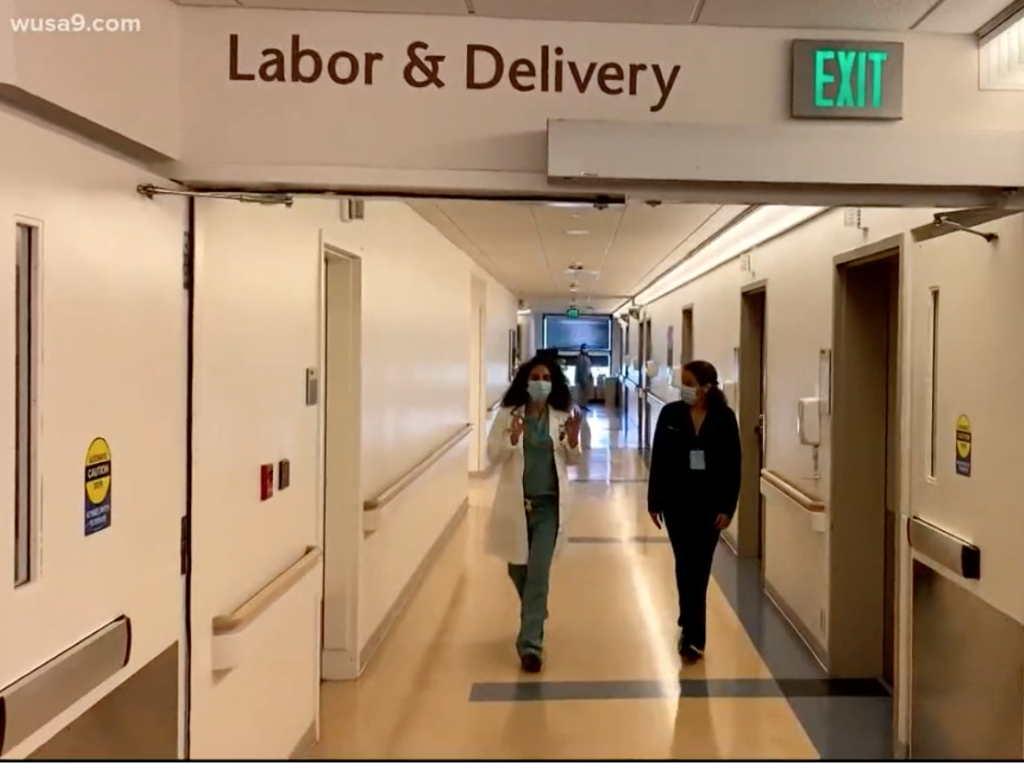Giving Birth During Covid19: Protocols and Possible Interventions
Coronavirus continues to be a threat to the American public. Because of this, giving birth during covid19 in a hospital or a healthcare setting has many expecting parents feeling more anxious than usual. To help parents feel more confident and in control, common labor and delivery interventions are detailed below including coronavirus protocols. If interventions happen, parents and support people will know exactly what’s happening and why. Knowing the facts help us make informed decisions, and this blog Giving Birth During Covid19: Protocols and Possible Interventions can help you be prepared.
We will continue to update this blog as more information becomes available.

Whether opting for a natural birth or an epidural, it can be helpful to understand the basics of medicines that may be administered during labor. Knowing the terms doctors and nurses use , and understanding the effects of potential interventions can help parents can feel comfortable. Decision making can happen quickly, especially if there are unexpected changes.
Below is an overview of medications, protocols and interventions that may be used during labor and birth.
Giving Birth During Covid19: Protocols and Possible Interventions
As coronavirus continues, many hospitals are now implementing stricter rules on their maternity floors. Each hospital is different so it’s important to understand your hospital or birthing center’s specific procedures but we do know that in almost every hospital, everyone should be prepared to wear masks even during labor.
Many hospitals are also implementing either a 1 visitor rule, meaning that birth moms can have 1 designated person supporting them through labor and delivery. The support person cannot change through mother’s entire stay in hospital. If it’ your sister who brought you to the hospital, it must be your sister who stays as your “plus 1” during all of labor and delivery. The support person can come and go, but cannot change. Generally, no children under 18 are allowed to visit at all during this time.
One thing to remember is that maternity wards are typically in a completely different, secured section of the hospital to minimize exposure risk of coronavirus and other illnesses to families and newborns. Coronavirus protocols are in place to protect families in a place that is considered safe to begin with. Epidurals, Anesthesia and Spinal Blocks
- An epidural is the local anesthesia administered just outside the membrane that surrounds your spinal cord and spinal fluid. Epidurals are the most common pain relief for laboring mothers. While there are differing opinions on the effect epidurals have on baby, they are overwhelmingly considered safe for baby’s health. There are reports of babies born to moms who have had epidurals taking longer to get into position for birth, since the epidural also travels to the baby through the umbilical cord.
Temporary side effects of epidurals are heavy shivering, a ringing of the ears, backache, nausea or difficulty urinating. These are also considered harmless to mom and baby. Because they are used to dull the intense sensations of labor, an epidural may also slow contractions.
- Spinal Block– A spinal block is a type of regional anesthesia, where the body is numb from the belly down. This is the intervention used for c-section birth since it means that mother cannot move, or feel any sensation.
- General Anesthesia Use of general anesthesia is extremely rare, but we’re including the term so parents will know the difference between general and regional anesthesia. General anesthesia means being completely asleep. (An example of when general anesthesia would be appropriate is if birth needed to be induced due to a traumatic car accident- again, very rare). Regional anesthesia again, is being numb in just one area (region).
Because the body is numb from the belly down with anesthesia, a Foley catheter will be inserted into the bladder to drain urine.

Oxygen
Oxygen, administered through an oxygen mask to laboring moms helps mother deliver oxygen to baby. The oxygen mask might be given if baby’s heart rate is dropping due to fetal distress during labor. This can be scary but the good news is that giving oxygen is common and has no adverse effects.
Pitocin
Pitocin is a synthetic version a natural hormone called Oxytocin. It’s a stimulant commonly given to induce or strengthen contractions. It may be given after an epidural because the epidural has slowed labor. It may also be given after birth to ensure mother does not hemorrhage to help the uterus contract back to its non-laboring state. Pitocin is generally considered safe,, potentially causing unnecessary problems during labor and early breastfeeding.
Common side effects of Pitocin may include nausea, stomach pain and runny nose or sinus pain. Rare side effects may include confusion, slurred speech and headache. The doctor must be notified immediately if any of these are present.
When Pitocin is administered, Labor & Delivery nurses watch to be sure that contractions are not occurring too severely or too frequently. These types of contractions can cause uterine rupture, meaning that the uterus tears creating a danger to both mother and baby. There is typically a 1:1 nurse to mom ratio when Pitocin is administered. This ensures the laboring mom and baby are safe and monitored correctly.
Giving Birth During Covid19: Protocols and Possible Interventions – Pain Management
- Percocet is the most common medication given to help mothers with pain management after delivery. It is an opioid. Most opioids are not advised for nursing newborns, so when possible, sticking to NSAIDs like ibuprofen (Advil or Motrin) for pain relief is preferred.
For a cesarean or difficult vaginal birth, Percocet is appropriate to help with the high level of pain.
If the goal is to nurse right away, the best thing to do is to nurse before Percocet is administered. If it’s decided that nursing on demand is okay on Percocet, the main thing to do is to watch baby for marked drowsiness. For a full term, healthy baby there will be side effects like sleepiness, but no lasting effects.
You may also choose to pump while Percocet is in your system and save the milk. Baby’s 6 months or older can drink the pumped milk without any danger. Once baby is past the newborn phase, the effects of opioids decrease.
If early formula supplementation is chosen so that opiods don’t travel to baby, it is still extremely possible to still have an exclusive breastfeeding relationship.
Blood Pressure Control and Gestational Hypertension
Preeclampsia, also sometimes called toxemia, is high-blood pressure in pregnant women. It can become very dangerous and even fatal if left untreated. Treatment for preeclampsia is administration of Magnesium Sulphate, also called “Mag.” Mag keeps Preeclampsia from advancing to Eclampsia, which manifests as seizures. If given magnesium sulphate it’s perfectly normal if birthing moms feel too sick to nurse right away.
Hypertension meds like Procardia or Labetalol are beta-blockers that may be prescribed to keep blood pressure down. These do not affect nursing of healthy full-term newborns.
***
This blog was written under the direction of present and former Let Mommy Sleep Labor & Delivery and NICU Registered Nurses. As always though, the primary care physician and L&D staff are the authority on care.
Categories
- Corporate Care & Partners
- COVID19 Archive
- En Espanol
- Expert Guides
- Hiring a Night Nanny
- Infant Safety
- Infant Sleep Hub
- Newborn Care
- Postpartum Health
- Twins & Multiples
- Work as a Night Doula
- zPost Archives
